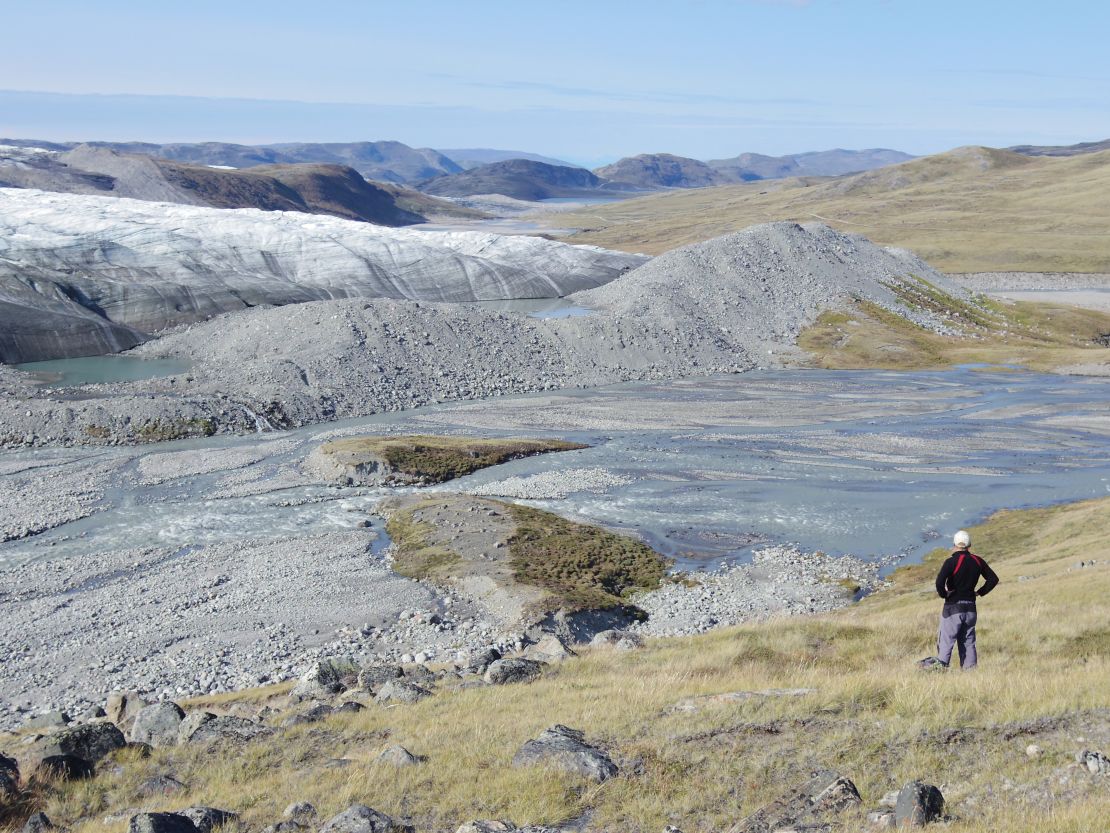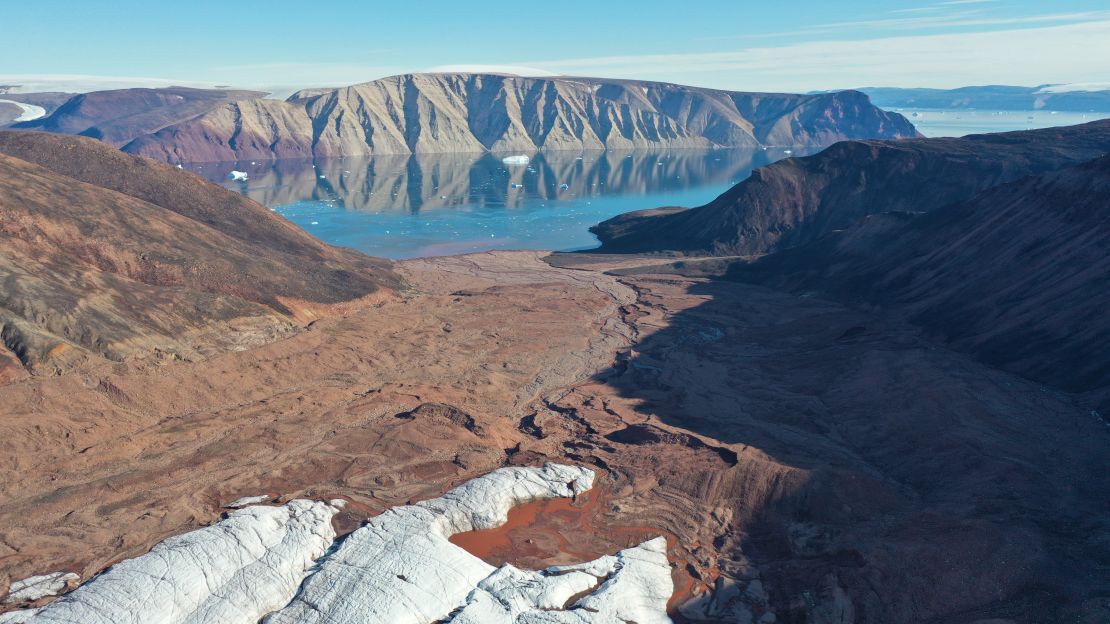CNN
—
The area of Greenland's ice loss over the past three decades is about 36 times the size of New York City, land that is rapidly giving way to wetlands and shrubs, a study published Tuesday showed.
The amount of vegetation in Greenland doubled between the mid-1980s and the mid-2000s, as swaths of the country previously covered in ice and snow turned into barren rock, wetlands or scrubland. Wetlands alone have quadrupled in that time.
By analyzing satellite images, scientists found that Greenland lost 28,707 square kilometers (about 11,000 square miles) of ice over the three-decade period, and warned of a cascade of impacts that could have catastrophic consequences on climate change and sea level. It rises.


Warmer air temperatures have led to ice loss, which in turn has led to higher global temperatures. This has caused the permafrost, a frozen layer just below the Earth's surface found in much of the Arctic, to melt. This melting releases carbon dioxide and methane that warm the planet, contributing to further global warming. Thawing permafrost also causes ground instability, which can affect infrastructure and buildings.
“We have seen signs that ice loss is triggering other feedbacks that will lead to more ice loss and further ‘greening’ of Greenland, as shrinking ice exposes bare rock that is colonized by tundra and eventually shrubs.” “At the same time, water released by melting ice stirs up sediments and silt, ultimately forming wetlands and swamps,” the report's authors, Jonathan Karivick, said in a press release.
Loss of ice creates what is known as a feedback loop. Snow and ice typically reflect the sun's energy back into space, preventing excessive heating in parts of the Earth. But as the ice disappears, those areas absorb more solar energy, raising Earth's surface temperatures, which can cause more melting and other negative effects.
Melting ice also increases the amount of water in lakes, as water absorbs more heat than snow, which increases Earth's surface temperatures.
Greenland has warmed at twice the global rate since the 1970s, and the study's authors warn that even more extreme temperatures are likely in the future.
Greenland is the largest island in the world and is mostly covered in ice and glaciers. About 57,000 people live in the country, and it is an autonomous state within the Kingdom of Denmark. A large portion of the population is indigenous and many people there depend on natural ecosystems for their survival.
Michael Grimes, the report's lead author, said the influx of sediment and nutrients into coastal waters is a particular problem for indigenous communities that depend on fishing, as well as for fishermen in other parts of the island.
“These changes are critical, especially for indigenous people whose traditional subsistence hunting practices depend on the stability of these sensitive ecosystems,” he said.
“Furthermore, the loss of Greenland’s ice mass is contributing significantly to global sea level rise, a trend that poses significant challenges now and in the future.”

“Beer aficionado. Gamer. Alcohol fanatic. Evil food trailblazer. Avid bacon maven.”
